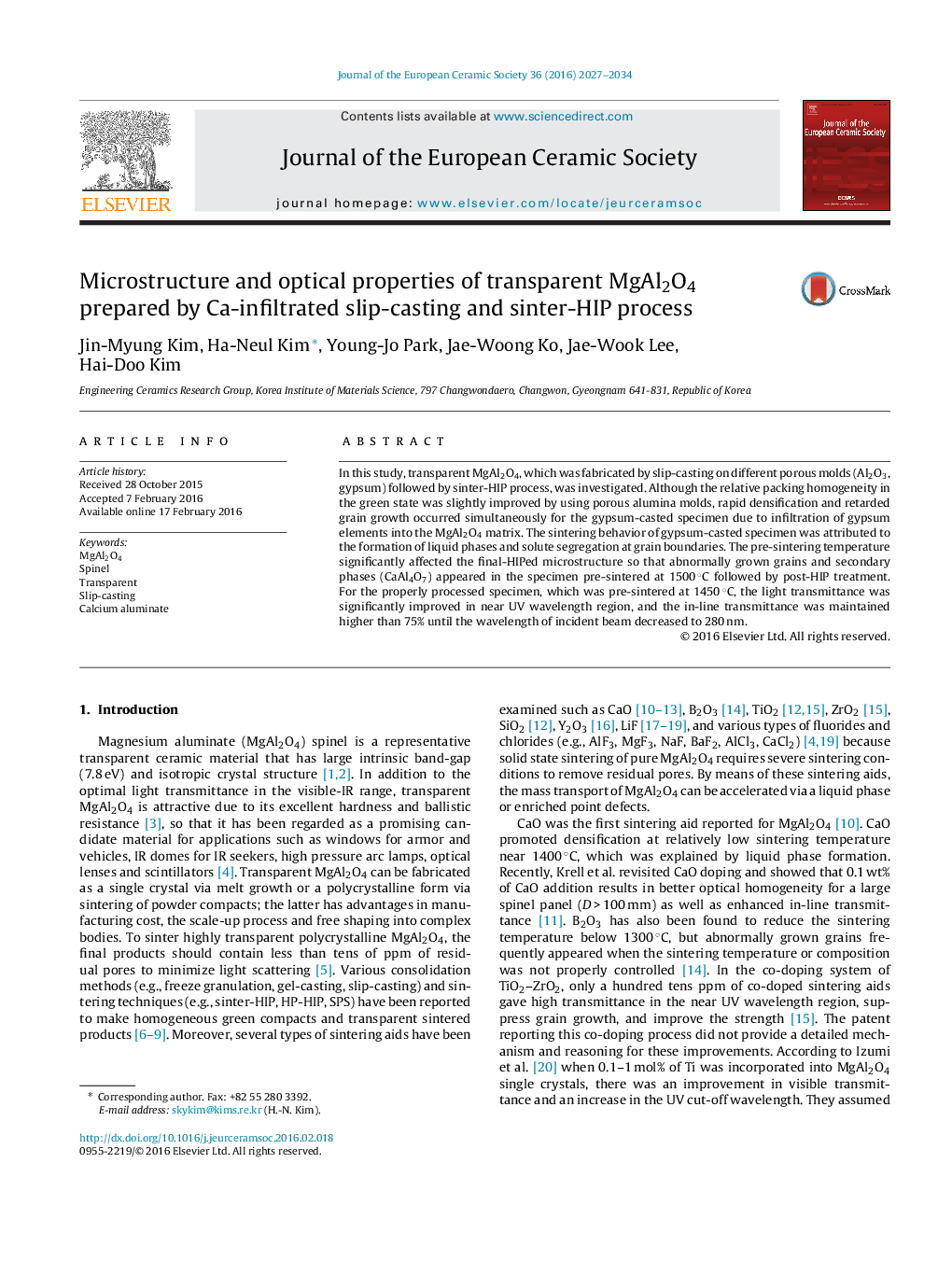| Article ID | Journal | Published Year | Pages | File Type |
|---|---|---|---|---|
| 1473628 | Journal of the European Ceramic Society | 2016 | 8 Pages |
In this study, transparent MgAl2O4, which was fabricated by slip-casting on different porous molds (Al2O3, gypsum) followed by sinter-HIP process, was investigated. Although the relative packing homogeneity in the green state was slightly improved by using porous alumina molds, rapid densification and retarded grain growth occurred simultaneously for the gypsum-casted specimen due to infiltration of gypsum elements into the MgAl2O4 matrix. The sintering behavior of gypsum-casted specimen was attributed to the formation of liquid phases and solute segregation at grain boundaries. The pre-sintering temperature significantly affected the final-HIPed microstructure so that abnormally grown grains and secondary phases (CaAl4O7) appeared in the specimen pre-sintered at 1500 °C followed by post-HIP treatment. For the properly processed specimen, which was pre-sintered at 1450 °C, the light transmittance was significantly improved in near UV wavelength region, and the in-line transmittance was maintained higher than 75% until the wavelength of incident beam decreased to 280 nm.
